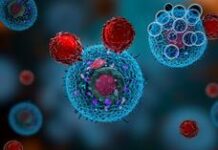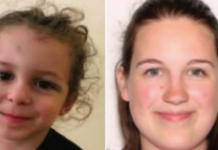In a multicentre, randomised, phase III study that involved patients with advanced melanoma and compared tumour infiltrating lymphocytes (TILs) T-cell therapy as first- or second-line treatment with ipilimumab, progression-free survival (PFS) was more than twice as long in the TILs group as in the ipilimumab group, and the hazard of disease progression or death was 50% lower. Separation of the PFS curves occurred within 6 months after randomisation, with a significant difference between the groups at 6 months and a continued benefit for patients in the TILs group. The findings are published by professors John B.A.G. Haanen of the Division of Medical Oncology, Netherlands Cancer Institute in Amsterdam, the Netherlands, Inge Marie Svane of the National Center for Cancer Immune Therapy, Department of Oncology, Copenhagen University Hospital in Herlev, Denmark and colleagues on 8 December 2022 in The New England Journal of Medicine.
The authors wrote in the background that although new treatment options have substantially improved the prognosis in patients with metastatic melanoma, approximately 50% still die from the disease within 5 years after the diagnosis of stage IV disease.
PD1 blockade with nivolumab or pembrolizumab is a frequently used first-line treatment in patients with metastatic melanoma. Combination of nivolumab plus ipilimumab induces responses in a higher percentage of patients, but is associated with a high incidence of severe side effects and is currently recommended primarily for a subgroup of patients with poor prognostic factors such as a high serum LDH level or liver or brain metastases. Approximately 50% of melanomas harbour a mutation in BRAF and combined BRAF and MEK inhibition is associated with a high response, but resistance develops in most patients over time.
Ipilimumab with or without nivolumab has become a second-line treatment option, but objective responses and durable benefits occur in only 15 to 30% of patients. Combination treatment with nivolumab and anti–LAG3 has also been associated with objective responses in 16% of patients with disease that was refractory to anti–PD1, but data on PFS are lacking.
Adoptive cell therapy with TILs is a personalised autologous treatment based on the infusion of autologous T lymphocytes that have been obtained directly from surgically removed autologous tumours and then expanded in culture with the use of interleukin-2 stimulation. Both preconditioning lymphodepletion with high-dose, non-myeloablative chemotherapy and the intravenous administration of high-dose interleukin-2 after cell transfer have been instrumental in the success of TIL adoptive cell therapy. Despite promising results, the role of TILs in the current treatment landscape of advanced melanoma remains undefined because of lack of data on a direct comparison of TILs with standard treatment.
In this multicentre, open-label, phase III, randomised study, the study team compared TILs with ipilimumab as first- or second-line treatment in patients with advanced melanoma. The investigators randomly assigned patients with unresectable stage IIIC or IV melanoma in a 1:1 ratio to receive TILs or anti–CTLA4 therapy with ipilimumab at 3 mg per kilogram of body weight. Infusion of at least 5×109 TILs was preceded by non-myeloablative, lymphodepleting chemotherapy (cyclophosphamide plus fludarabine) and followed by high-dose interleukin-2. The primary endpoint was PFS.
In total 168 patients, of whom 86% with disease refractory to anti–PD1 treatment, were assigned to receive TILs (84 patients) or ipilimumab (84 patients). In the intention-to-treat population, median PFS was 7.2 months (95% confidence interval [CI] 4.2 to 13.1) in the TILs group and 3.1 months (95% CI 3.0 to 4.3) in the ipilimumab group (hazard ratio for progression or death 0.50, 95% CI 0.35 to 0.72; p < 0.001). Furthermore 49% (95% CI 38 to 60) and 21% (95% CI 13 to 32) of the patients had an objective response in two groups. Median overall survival was 25.8 months (95% CI 18.2 to not reached) in the TILs group and 18.9 months (95% CI 13.8 to 32.6) in the ipilimumab group.
Treatment-related adverse events of grade 3 or higher occurred in all patients who received TILs and in 57% of those who received ipilimumab. Treatment-related adverse events in the TILs group were predominantly to chemotherapy, interleukin-2, or both. Despite the increased frequency of adverse events, the global health-related quality-of-life scores were higher in patients who received TILs.
The authors concluded that this phase III, multicentre, open-label, randomised study that involved patients with advanced melanoma of whom the majority had disease that was refractory to anti–PD1 therapy showed that TILs can be successfully generated from resected melanoma metastases. Treatment with TILs was associated with significantly longer PFS than treatment with ipilimumab.
In an accompanied editorial, Prof. George Coukos of the Ludwig Institute for Cancer Research and the Department of Oncology, University of Lausanne, and Lausanne University Hospital in Lausanne, Switzerland wrote that observations with TILs were made largely before the approval of first-line PD1 blockade for advanced melanoma, so a key question was whether patients with disease that was refractory to anti–PD1 would benefit from TILs. The choice between the nivolumab plus ipilimumab combination therapy and TILs as second-line treatment, as well as the appropriate order in which they are administered, will become important matters of debate and further research.
Prof. Coukos emphasized that in order to receive TILs, a patient must have a good performance status and adequate organ and system function. Older, frail patients and those with severe organ dysfunction would not qualify. However, treatment-related severe adverse events occur in more than half the patients who receive nivolumab plus ipilimumab,so up to 40% of these patients discontinue treatment. Complications that are mainly related to autoimmune side effects may be protracted and associated with considerable morbidity; some of these complications occur with the use of prescribed immunosuppressive therapy. In contrast, TILs therapy is associated with transient and manageable side effects related to the use of chemotherapy and intravenous interleukin-2. Estimations of short- and longer-term risks versus benefits may be taken into account when either therapy is considered for individual patients. Similar cost–benefit considerations will influence regulatory decisions.
TILs therapy currently poses important challenges, and opportunities exist for future improvements. The simplification of logistics to procure TILs and automation of manufacturing are key to reducing costs. TIL products are polyclonal populations of lymphocytes, only a fraction of which are tumour-specific. Understanding the key drivers of product potency will be important to maximise their efficacy and reduce interpatient variability.
The observation that clinical benefit correlates with a higher frequency of cells that recognise tumour neoantigens has prompted efforts to enrich tumour-specific clones during culture. This enrichment could be particularly relevant for solid tumours in which the baseline frequency of such cells may be low. Furthermore, stem-cell properties of T-cells, persistence, and functionality play major roles in the effectiveness of immunotherapy. Culture conditioning as well as cell optimisation through gene engineering may improve cell persistence, tumour engraftment, and performance under the adverse conditions of the tumour microenvironment. These methods may not only enhance the potency of the TIL products but may also free patients who receive TILs therapy from the use of high-dose, lymphodepleting chemotherapy and adjuvant intravenous interleukin-2, which are currently necessary, but constitute the key drivers of side effects and costs.
Not yet adequately addressed are mechanisms of resistance to TILs, so much remains to be learned to make the best use of this type of technology according to Prof. Coukos.
The study was supported by the Dutch Cancer Society, the Netherlands Organization for Health Research and Development, the Dutch Ministry of Health, Stichting Avento, the Antoni van Leeuwenhoek Foundation, Copenhagen University Hospital (Herlev), the Danish Cancer Society, and the Capital Region of Denmark Research Foundation.










